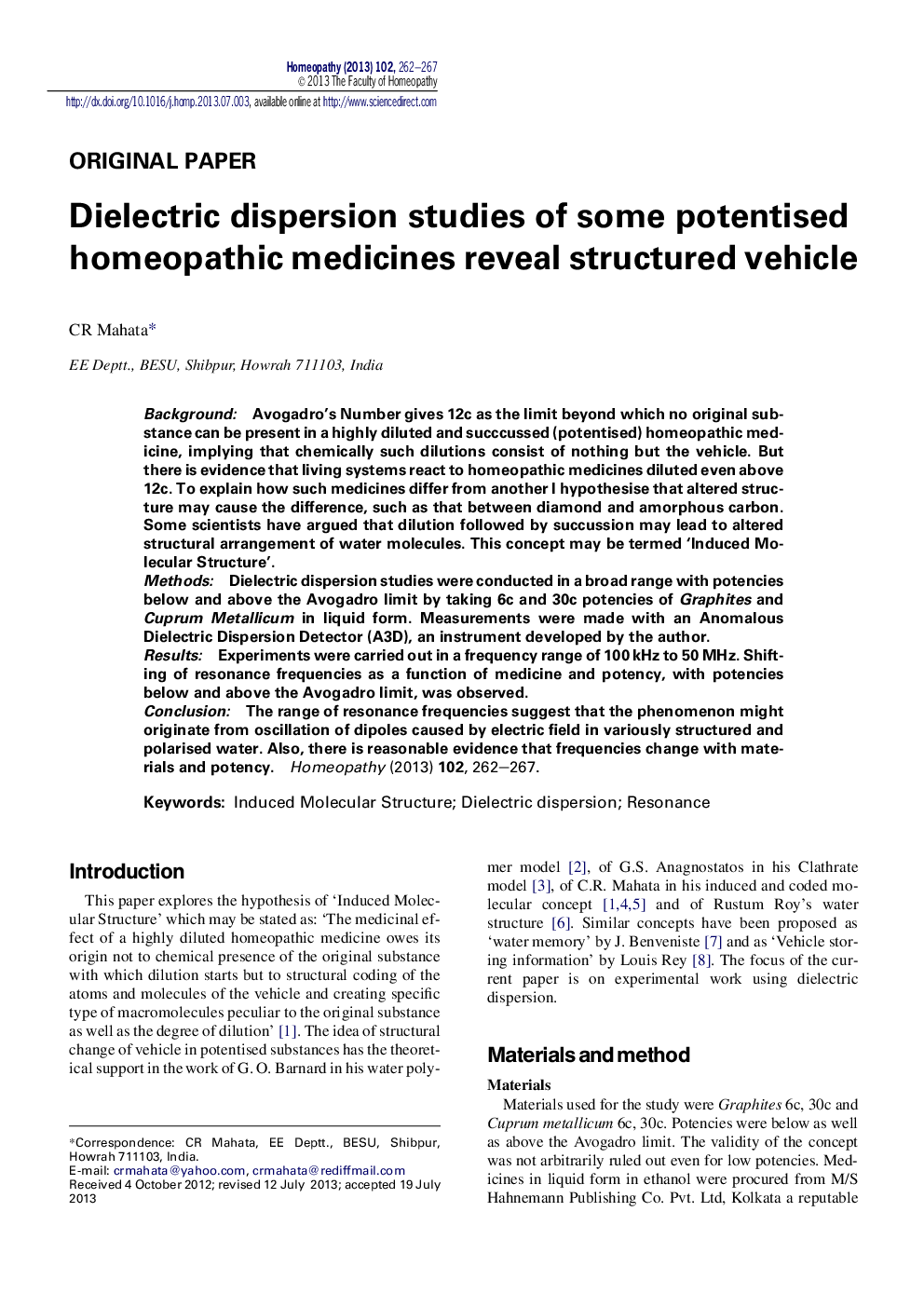| Article ID | Journal | Published Year | Pages | File Type |
|---|---|---|---|---|
| 2630007 | Homeopathy | 2013 | 6 Pages |
BackgroundAvogadro's Number gives 12c as the limit beyond which no original substance can be present in a highly diluted and succcussed (potentised) homeopathic medicine, implying that chemically such dilutions consist of nothing but the vehicle. But there is evidence that living systems react to homeopathic medicines diluted even above 12c. To explain how such medicines differ from another I hypothesise that altered structure may cause the difference, such as that between diamond and amorphous carbon. Some scientists have argued that dilution followed by succussion may lead to altered structural arrangement of water molecules. This concept may be termed ‘Induced Molecular Structure’.MethodsDielectric dispersion studies were conducted in a broad range with potencies below and above the Avogadro limit by taking 6c and 30c potencies of Graphites and Cuprum Metallicum in liquid form. Measurements were made with an Anomalous Dielectric Dispersion Detector (A3D), an instrument developed by the author.ResultsExperiments were carried out in a frequency range of 100 kHz to 50 MHz. Shifting of resonance frequencies as a function of medicine and potency, with potencies below and above the Avogadro limit, was observed.ConclusionThe range of resonance frequencies suggest that the phenomenon might originate from oscillation of dipoles caused by electric field in variously structured and polarised water. Also, there is reasonable evidence that frequencies change with materials and potency.
